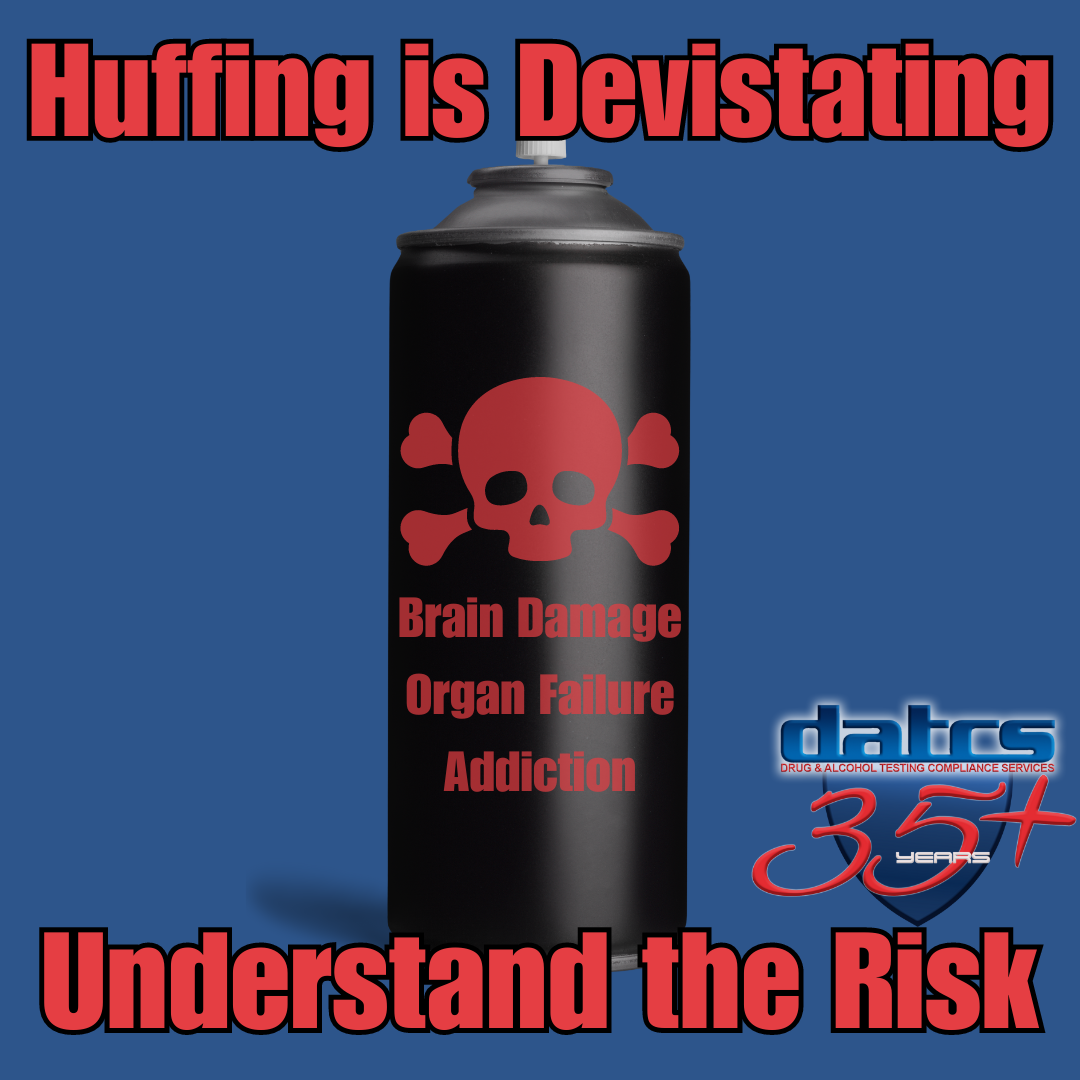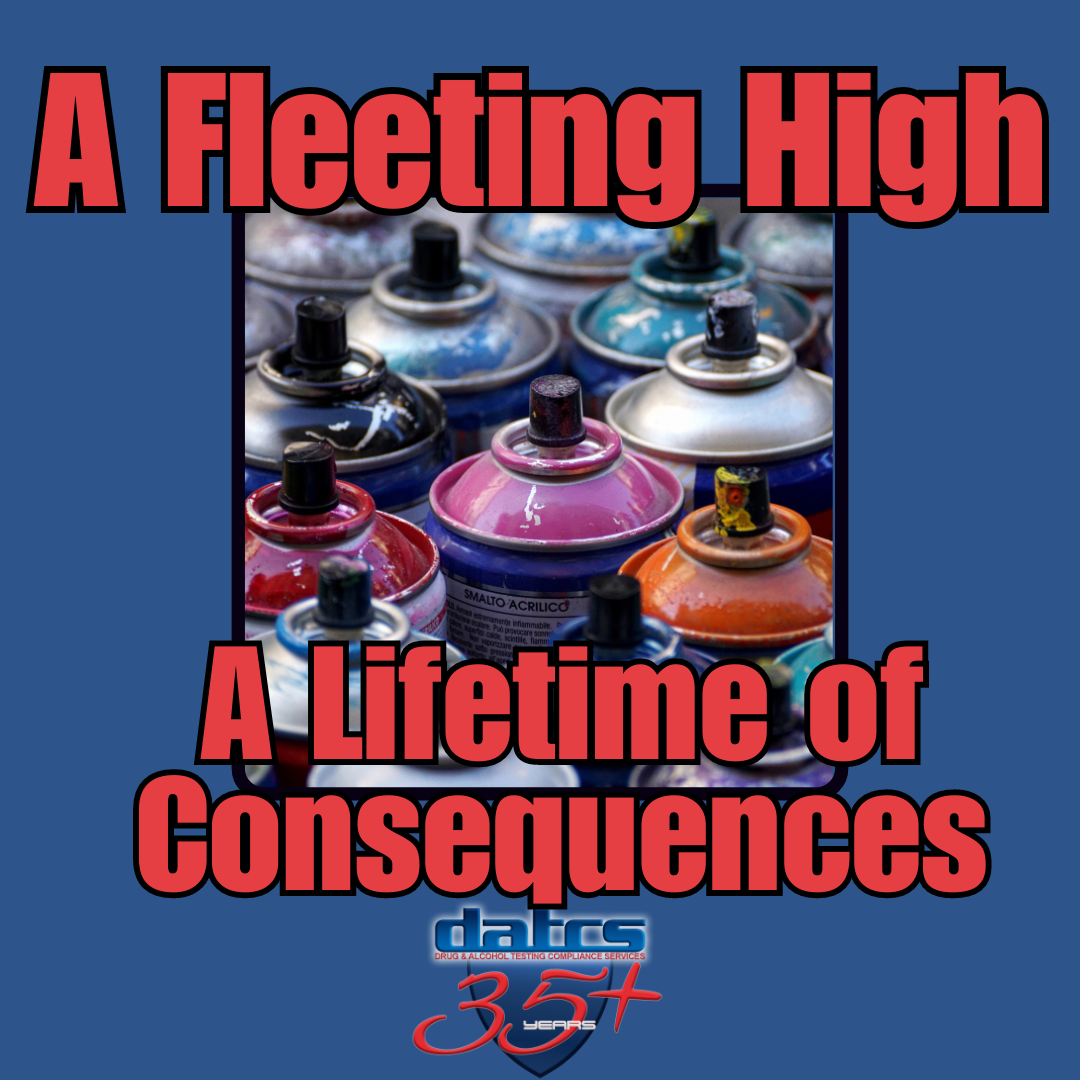The Hidden Dangers of Huffing: Understanding Inhalant Abuse and Detection
Inhalants, seemingly harmless household products, pose a grave threat when misused. The practice of “huffing,” or inhaling fumes from these products, can lead to devastating consequences, including sudden death. This blog post delves into the dangers of huffing, exploring the risks associated with various inhalants, and emphasizing the importance of early detection and intervention.
What is Huffing?
Huffing involves inhaling chemical vapors to achieve a quick, short-lived high. Common household items like glue, paint thinners, markers, and even canned air can be misused as inhalants. The effects are rapid but fleeting, often leading to repeated use and increasing the risk of serious harm. As of 2015, around 10 percent of Americans (aged 12 and older) have misused inhalant products like Dust-Off at some point in life for the psychoactive effects they can produce, the National Institute on Drug Abuse (NIDA) publishes.

The Dangers of Huffing: A Closer Look at Specific Inhalants
-
Canned Air (e.g., Dust-Off) These products contain compressed gases like difluoroethane. When inhaled, these gases can cause a sudden rush of euphoria, but they also disrupt the heart’s normal rhythm, potentially leading to fatal cardiac arrest. The risk of “sudden sniffing death” is very real, even with first-time use. The journal Case Reports in Emergency Medicine reports on several instances where Dust-Off abuse has led to cardiomyopathy, arrhythmias, and increased myocardial sensitization.
- Solvents: Found in paint thinners, nail polish remover, and degreasers, solvents can cause damage to the brain, liver, kidneys, and lungs. They can also lead to hearing loss, vision problems, and muscle weakness.
- Gases: This category includes butane (found in lighters), propane (used in camping stoves), and nitrous oxide (sometimes called “laughing gas”). Inhaling these gases can deprive the brain of oxygen, leading to unconsciousness, seizures, and even death.
- Nitrites: Often referred to as “poppers,” nitrites are sometimes misused to enhance sexual pleasure. However, they can dangerously lower blood pressure, leading to dizziness, fainting, and even heart attack.
- Aerosols: Spray paints, hair sprays, and cleaning products contain volatile chemicals that can be harmful when inhaled. They can cause respiratory problems, neurological damage, and even sudden death.
Long-Term Consequences of Huffing
Repeated huffing can lead to severe and irreversible damage to the body and mind. Some of the potential long-term consequences include:
- Brain damage: Inhalants can damage the myelin sheath that protects nerve fibers, leading to cognitive impairment, memory loss, and difficulty with movement and coordination. The journal Pediatrics and Child Health reports that these drugs can damage neural membranes and myelin as well as lead to brainstem dysfunction, which can cause motor, sensory, and cognitive deficits.
- Organ damage: The liver, kidneys, heart, and lungs can all be harmed by chronic inhalant abuse.
- Hearing loss and vision problems: These sensory impairments can be permanent consequences of huffing.
- Addiction: Huffing can lead to physical and psychological dependence, making it difficult to quit even in the face of serious health consequences. NIDA warns that between 100 and 200 people die every year from a cause related to inhalant abuse.
Recognizing the Signs of Inhalant Abuse
It’s crucial to be aware of the signs of inhalant abuse, especially in young people. The National Capitol Poison Center (NCPC) publishes that around 20 percent of 8th graders report abusing inhalants at some point. Some red flags include:
- Possession of empty cans of compressed air, paint thinner containers, or other inhalants.
- Chemical odor on breath or clothing.
- Paint or other stains on the face, hands, or clothing.
- Sores or rashes around the mouth or nose.
- Changes in behavior, such as mood swings, irritability, or withdrawal from friends and family.
- Decline in academic performance or loss of interest in hobbies.
Detecting Inhalant Abuse: DATCS Can Help
While inhalants are rapidly metabolized by the body, making them difficult to detect, DATCS offers lab-based urine tests that can help identify recent inhalant use. These tests can be a valuable tool for parents, educators, and employers concerned about potential inhalant abuse.
Seeking Help for Inhalant Abuse
If you suspect that someone you know is abusing inhalants, it’s essential to seek help immediately. Inhalant abuse is a serious problem with potentially fatal consequences. Remember, reaching out for help is not a sign of weakness but a courageous step towards recovery.

Where to Turn:
- Talk to a trusted adult: If you’re a young person struggling with inhalant abuse, confide in a parent, teacher, counselor, or another adult you trust. They can offer support and guidance in finding professional help.
- Contact a healthcare professional: Your doctor or a local clinic can assess the situation, provide medical care if needed, and refer you to appropriate treatment resources.
- Reach out to a helpline: Several national helplines offer confidential support and information about substance abuse, including inhalant abuse. Consider calling the Substance Abuse and Mental Health Services Administration (SAMHSA) National Helpline at 1-800-662-HELP (4357).
- Seek professional treatment: Inhalant abuse often requires specialized treatment to address both the physical and psychological aspects of addiction. Treatment options may include detoxification, behavioral therapy, and support groups.
Remember, early intervention is key to successful recovery. Don’t hesitate to reach out for help today.
Prevention is Key
Preventing inhalant abuse starts with education and awareness. By understanding the risks and recognizing the signs, we can empower ourselves and our communities to take proactive steps to prevent this dangerous practice.
Strategies for Prevention:
- Open communication: Parents, educators, and community leaders should engage in open and honest conversations with young people about the dangers of inhalant abuse. Encourage them to make healthy choices and resist peer pressure.
- Safe storage and disposal: Keep potentially harmful household products, such as cleaning supplies, paints, and solvents, out of reach of children and adolescents. Dispose of these products responsibly according to local guidelines.
- School-based prevention programs: Schools can implement evidence-based prevention programs that educate students about the risks of inhalant abuse and teach them effective refusal skills.
- Community awareness campaigns: Raising awareness about the dangers of huffing through community events, public service announcements, and social media campaigns can help reach a wider audience and promote prevention efforts.
By working together, we can create a safer and healthier environment for everyone.
Conclusion
Huffing is a dangerous and potentially deadly practice. The short-term high is not worth the risk of serious health consequences, including sudden death. If you or someone you know is struggling with inhalant abuse, please seek help. There is hope for recovery, and treatment can make a life-saving difference. Remember, prevention is key. By educating ourselves and our loved ones about the dangers of huffing, we can help prevent this harmful practice and protect the health and well-being of our communities.
If you or someone you love is struggling with substance abuse, don’t hesitate to reach out for help. Contact a healthcare professional or addiction specialist to discuss treatment options. If you’re concerned about potential inhalant abuse, consider DATCS’s lab-based urine tests for detection and intervention. Remember, you’re not alone in this fight.

